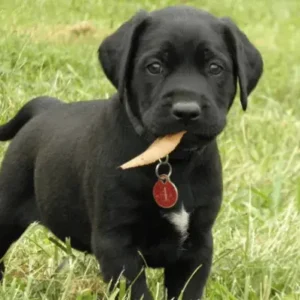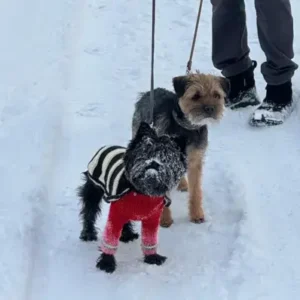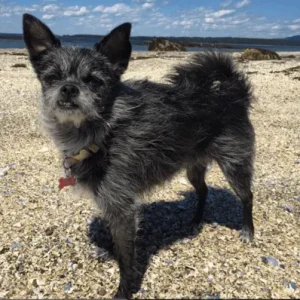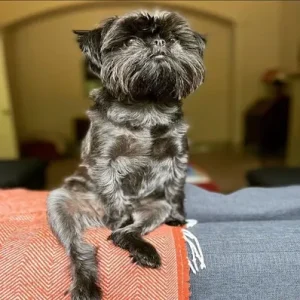Tornjak History/Origin
The dogs of the original stock were dispersed in the mountainous areas of Bosnia, Herzegovina, and Croatia, along with their surrounding valleys. The first written records of the breed date back to 1067 A.D., including its size and traits.
It is believed that Slavs brought dogs similar to the Tornjak when they migrated to the area, though research shows it likely descends from the Tibetan Mastiff.
Tornjaks remained local to Bosnia and Herzegovina for over a thousand years, earning a well-documented history among ancient breeds. Initially registered as “Kanis Montanus” (mountain dog), locals began calling it Tornjak, meaning “enclosure for sheep.”
In 1981, this purebred was officially recognized as the Bosnian-Herzegovinian Sheepdog–Tornjak and classified as autochthonous, meaning it originated from a specific region.
Tornjak History- Source: AKC.org
In 1990, the breed standard was established in Travnik, Bosnia. In 2006, the Federation Cynologique Internationale (FCI) provisionally accepted the Tornjak, allowing it to compete in FCI-sponsored shows worldwide.
Today, the Tornjak is fully recognized by both the FCI and the United Kennel Club and has been accepted into the American Kennel Club’s Foundation Stock Service.
Tornjak Personality
Tornjak owners frequently highlight the breed’s strong loyalty and affection. These dogs are one of the dog breeds that love being around their human companions and naturally act like protective guardian dogs.
- Tornjak temperament
Despite their strength and athleticism, Tornjaks have a calm temperament and enjoy spending quality time with their family just as much as more active pursuits. Known for their intelligence, they respond well to training and form deep bonds with their owners.
- Potential Challenges
The Tornjak, while intelligent and loyal, can present some challenges for owners, particularly when it comes to keeping them mentally and physically stimulated. They can become bored without sufficient exercise or tasks to engage their minds, which may lead to undesirable behaviors like restlessness or stubbornness.
Additionally, their natural guard dog instincts mean they may be wary of strangers, requiring consistent socialization from an early age. Proper training and regular mental enrichment are key to managing these challenges and ensuring a well-adjusted, happy Tornjak.
Tornjak Physical Appearance
The Tornjak is a large dog, powerful, and well-muscled breed with a well-proportioned, nearly square-shaped body. While his bones are thick, he should not appear too heavy or bulky. His eyes are large, almond-shaped, and dark brown, complementing his broad black nose with wide nostrils.
- Tornjak Size
Tornjaks typically stand between 23 to 28 inches at the shoulder and weigh around 60 to 110 pounds. Females are generally smaller than males, though individual size can vary, with some dogs falling outside the average range.
- Coat color
The Tornjak has a dense coat that is long and thick. He features a double coat, with a straight, harsh topcoat and a softer, woolly undercoat beneath.
Typically, the Tornjak’s coat is white with colored markings, giving him a parti-color or, in some cases, piebald appearance. Though rare, some Tornjaks may have a black mantle over their body with white markings. The breed is commonly found in three color combinations: black and white, red and white, and brown and white.
Brown and White Tornjak- Source: _tornjak_
Black and White Tornjak- Source: tornjaksnaga
Tornjak Gender Differences
In the Tornjak breed, males tend to grow significantly larger than females, with a noticeable size difference between the sexes. However, females often mature more quickly, both physically and mentally, than their male counterparts. This faster development in females may make it easy to train at a younger age, while males might take longer to reach full maturity.
Tornjak Feed/Nutrition
For optimal health, the Tornjak requires a well-balanced diet that meets the energy needs of a medium to large-sized breed, typically around 3 cups of food per day. Due to their propensity for weight gain if not exercised adequately, it’s essential to measure their food portions and feed them twice daily instead of leaving food out continuously.
Additionally, the Tornjak’s dietary needs change as they progress through different life stages, from puppyhood to adulthood and into their senior years. To ensure you provide the best nutrition for your Tornjak, it’s advisable to consult with a veterinarian.
Corn can be given in moderation as a treat. However, avoid giving it to your dog if it’s heavily seasoned or prepared with butter.
Tornjak Health
Tornjaks generally enjoy good health; however, like all dog breeds, they may be vulnerable to specific health conditions. While not all Tornjaks will encounter these ailments, being informed about them is crucial if you’re considering this breed. Some prevalent health problems among Tornjaks include:
- Hip Dysplasia: Hip dysplasia is a common orthopedic condition where the hip joint doesn’t develop properly, resulting in a poor fit between the ball of the femur and the hip socket. This can lead to joint instability, degeneration, and pain, causing lameness and reduced mobility as the dog ages. Preventive measures include maintaining a healthy weight, providing regular low-impact exercise, and ensuring that breeding dogs are screened for hip dysplasia to reduce the risk of passing on genetic predispositions.
- Elbow Dysplasia: Elbow dysplasia is an orthopedic condition affecting the elbow joint, characterized by several developmental abnormalities that cause joint incongruity and instability. This condition can lead to pain, lameness, and a decreased range of motion in the affected limb. To prevent elbow dysplasia, it is important to provide proper nutrition during the growth phase, avoid excessive exercise in young dogs, and choose breeding stock that has been evaluated for elbow health issues.
Tornjak Care and Grooming
To properly care for a Tornjak, it’s crucial to provide plenty of outdoor time and exercise. Aim for at least 45 minutes of exercise and play each day, and if possible, extend this duration even further.
The Tornjak is an athletic breed that thrives on physical activity; regular walks, playtime, and structured training sessions are vital for their well-being. Keep in mind that these sociable dogs may not tolerate being left alone in a yard for long periods.
Additional aspects of Tornjak care include dental hygiene and nail maintenance. Brush your dog’s teeth at least two to three times a week to prevent tartar buildup and bacterial problems, with daily brushing being even more beneficial.
Regularly check and trim your Tornjak’s nails as necessary; however, if they get enough outdoor activity, their nails may naturally stay in good condition.
Weekly brushing should generally be sufficient for grooming, but during shedding seasons, increasing brushing to a daily routine may be helpful. Thanks to their thick coat, Tornjaks thrive in colder climates, but in warmer months, it’s essential to provide ample fresh water to keep them cool and hydrated.
Additionally, leash training your dog early on can help ensure they walk calmly by your side, especially in outdoor environments.
Tornjak Rescue Groups
Rescue groups play a vital role in providing shelter and care for Tornjaks in need of new homes. These organizations not only work to rehabilitate and rehome abandoned or neglected dogs but also promote responsible pet ownership and breed awareness. By partnering with foster families and volunteers, rescue groups ensure that each Tornjak receives the love and support necessary for a successful transition into a forever home.
How Much Does Tornjak Cost?
The price of a Tornjak typically ranges from $800 to $1,500, depending on factors such as breeder reputation, pedigree, and location.
When considering purchasing a Tornjak, it’s essential to prioritize ethical practices by choosing reputable breeders who prioritize the health and well-being of their dogs. By supporting ethical breeding practices, you not only help promote the breed’s integrity but also contribute to the overall welfare of dogs.
Interesting Facts
- The name “Tornjak” translates to “enclosure for sheep,” reflecting the breed’s original purpose as a protector of livestock in mountainous areas.
- In Bosnia and Herzegovina, Tornjaks symbolize the groom’s promise to protect his bride at weddings by guarding the venue entrance.
Best For
The Tornjak is best suited for individuals or families who can provide ample outdoor space and are committed to regular exercise and mental stimulation. This breed thrives in active households that can engage them in activities like hiking or playing fetch, making them ideal for those who enjoy an outdoor lifestyle. Additionally, their loyal and protective nature makes them a great choice for individuals seeking a devoted companion who is also a capable guardian.
Top Names
| Male Tornjak Names | Female Tornjak Names |
| Luka | Sara |
| Max | Bella |
| Bruno | Mia |
| Kova | Nika |
| Rex | Tara |

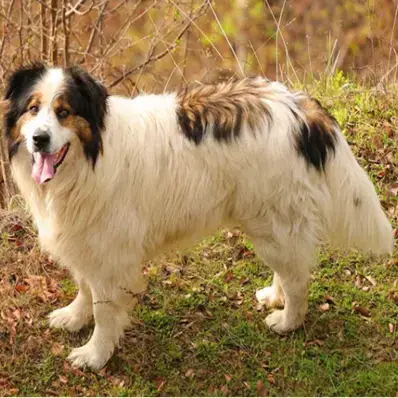







 Tornjak History- Source:
Tornjak History- Source: 

 Brown and White Tornjak- Source:
Brown and White Tornjak- Source:  Black and White Tornjak- Source:
Black and White Tornjak- Source: 


